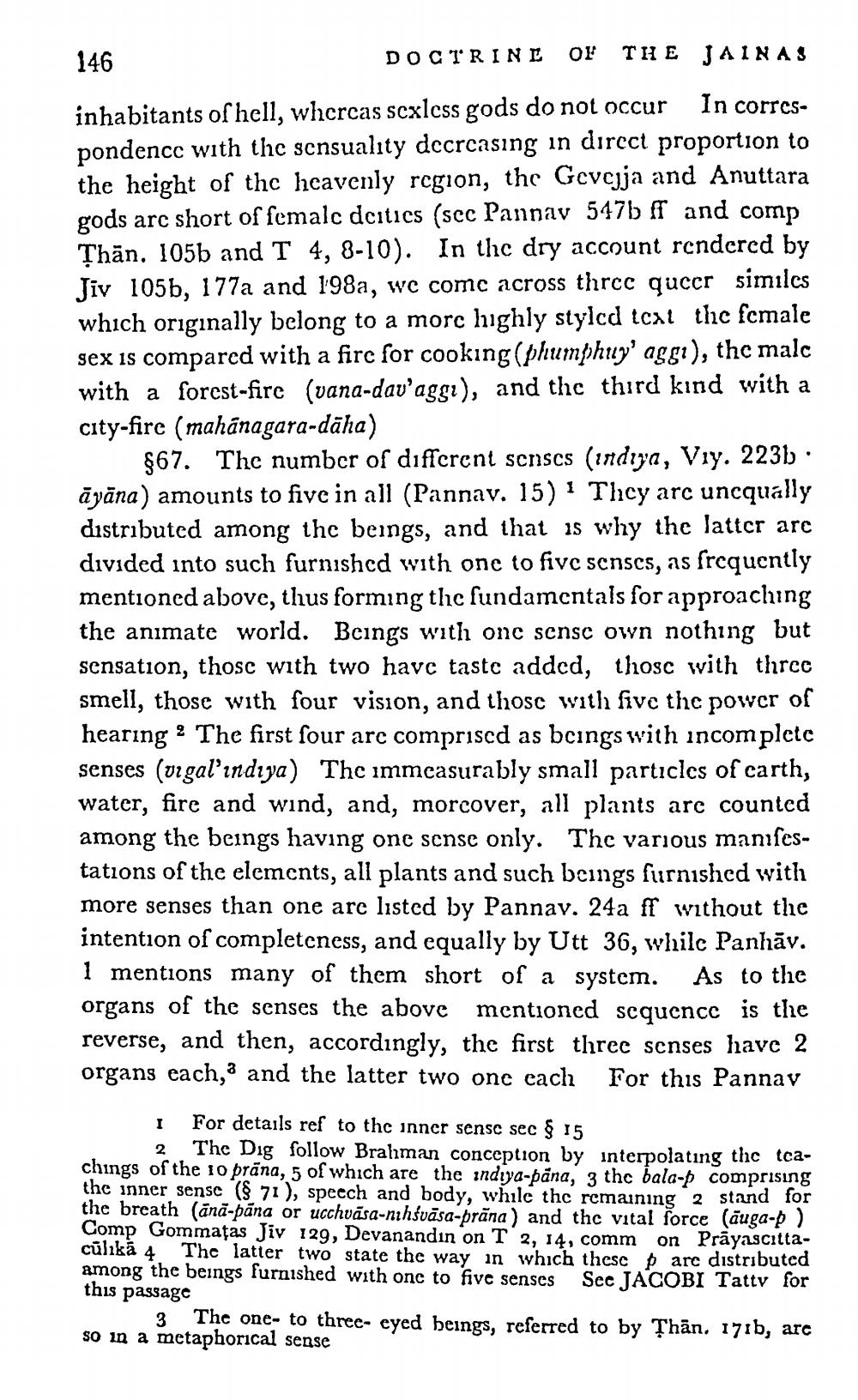________________
146
DOCTRINE OF THE JAINAS inhabitants of hell, whercas scxless gods do not occur in correspondence with the sensuality decrcasing in direct proportion to the height of thc heavenly region, the Gevejja and Anuttara gods are short of femalc dcities (scc Pannav 547b ff and comp Thān. 105b and T 4, 8-10). In the dry account rcndcrcd by Jiv 105b, 177a and 198a, we come across thrcc quccr similes which originally belong to a morc highly stylcd tcai the female sex is compared with a fire for cooking (phumphuy' agg?), thc malc with a forest-fire (vana-dav'aggi), and the third kind with a city-fire (mahanagara-dāha)
867. The number of different scnscs (indiya, Viy. 223b : āyāna) amounts to five in all (Pannav. 15) · They arc uncqually distributed among the beings, and that is why the latter arc divided into such furnished with one to fivc scnscs, as frequently mentioned above, thus forming the fundamentals for approaching the animate world. Beings with onc scnsc own nothing but sensation, those with two have tastc added, those with three smell, those with four vision, and those with five the power of hearing ? The first four arc comprised as bcings with incompleto senses (orgal'indiya) Thc immcasurably small particles of carth, water, fire and wind, and, morcover, all plants are counted among the beings having one sense only. The various manifestations of the elements, all plants and such beings furnished with more senses than one are listed by Pannav. 24a ff without the intention of completeness, and equally by Utt 36, whilc Panhāv. 1 mentions many of them short of a system. As to the organs of the senses the above mentioned scqucncc is the reverse, and then, accordingly, the first three scnses have 2 organs each,; and the latter two one each For this Pannav
I For details ref to the inner sensc sec 15
2 Thc Dig follow Brahman conception by interpolating thc tcachings of the 10 prāna, 5 of which are the indiya-pana, 3 the bala-p comprising the inner sense (§ 71 ), speech and body, while the remaining 2 stand for the breath (anā-pāna or ucсhvāsa-nihśvasa-brāna) and the vital force (auga-) Comp Gommatas Jiv 129, Devanandın on T 2, 14, common Prāyascitta. cūlıkā 4 The latter two state the way in which these are distributed among the beings furnished with one to five senses Sec JACOBI Tatty for this passage
3 The one- to three- eyed beings, referred to by Thān. 171b, arc so in a metaphorical sense




